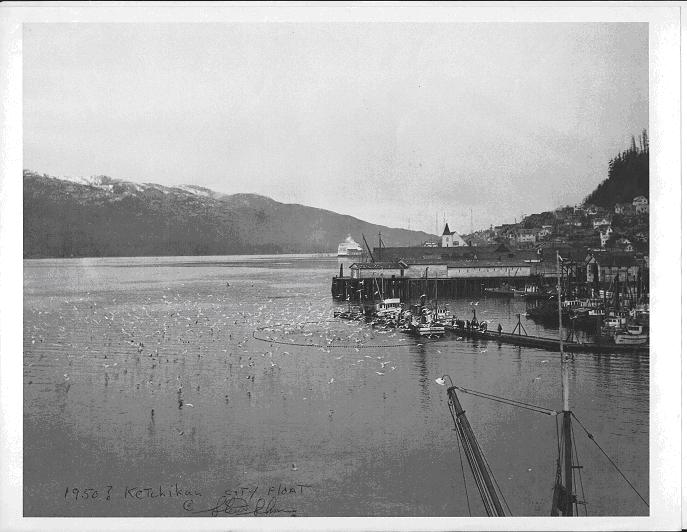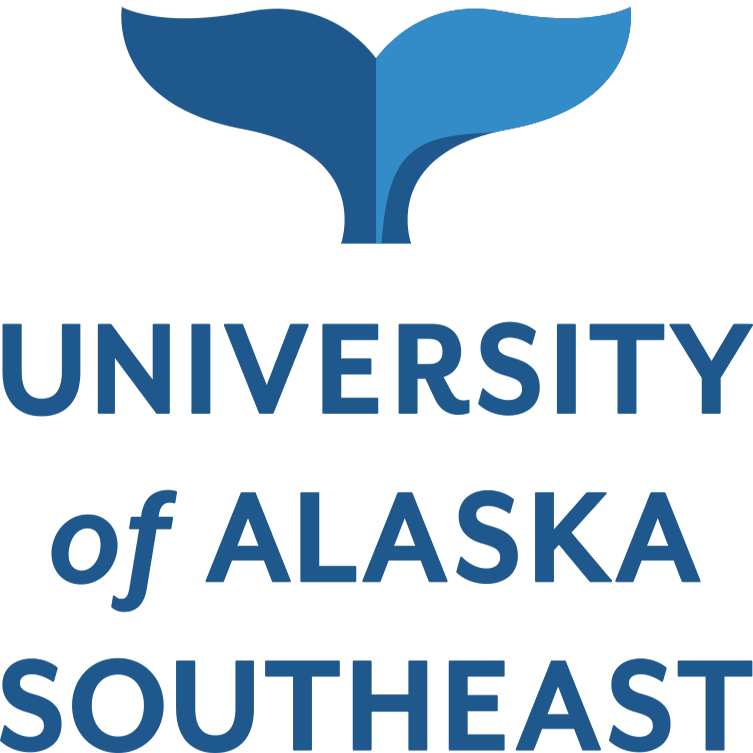History of Commercial Herring Fisheries in Southeast Alaska

Introduction
Herring have long been intertwined with the history of the people of Southeast Alaska, both in traditional cultures and after the arrival of European cultures. This report focuses on the history of commercial exploitation of Pacific herring in Southeast Alaska, with particular emphasis on the era of the herring reduction fishery (1882 - 1966).
Information about the early years of the herring fishery is, understandably, sparse. Following the purchase of Alaska from Russia in 1867, there appears to have been little interest in official fishery record-keeping until the U.S. Bureau of Commercial Fisheries began sending its research vessel “Albatross” to the inside waters of Southeast Alaska in 1887. The Alaska fisheries section of the U.S. Census of 1880 (Petroff 1884) has only cursory information about fisheries and does not mention herring; the 1890 census has somewhat more detail. Travel to Alaska became fashionable during the 1880s and travel writers such as Eliza Ruhama Scidmore (1885, 1893) provide some glimpses of herring fisheries and herring abundance during the 1880s in their travelogues, prior to the official period of government documentation. In this report, information from the earlier, more subjective, sources of information about herring fisheries and abundance will be synthesized with later, more analytical, work produced by professional biologists and fishery agencies.
Reduction and Food Fisheries (1878 - 1966)
Early Europeans visiting Alaska would have been familiar with uses of the very similar Atlantic herring and undoubtedly utilized Pacific herring for food as well as bait for catching salmon and halibut. No records of the amount of herring used, traded, or exported by either Europeans or local Alaskan cultures are available prior to the purchase of Alaska from Russia in 1867 and for more than a decade afterwards. The amount of herring captured by individual fishermen and used for their own bait for commercial or personal use has always been largely undocumented, but has been a very minor component of overall utilization.
Killisnoo Plant
The herring reduction fishery in Southeast Alaska began as a curious anomaly. The reduction plant at Killisnoo, near Angoon, was the first and only plant operating anywhere in British Columbia or Alaska for nearly 40 years. The Killisnoo plant was established by the Northwest Trading Company, an ambitious firm from Portland, Oregon, which sought to establish a foothold in the newly purchased (1867) and rapidly
developing Alaska Territory. The aggressive and extravagant expansion of the Northwest Trading Company was initiated by Paul Schulze, using his funding connections with Northern Pacific Railroad financier Henry Villard. The Northwest Trading Company began operations at Killisnoo as a trading post in 1878 (U.S. Dept. of Interior 1893).
Several factors contributed to the ultimate demise of the Killisnoo plant. By the 1920s, competition had become stiff with many other reduction plants opening in Chatham Strait. The Killisnoo operation retained the labor-intensive Norwegian seine harvesting method and relatively cumbersome steam tenders long after other operations had switched to more modern and efficient techniques. Herring in northern Chatham Strait became scarce; abundant herring were then only found in southern Chatham Strait, much closer to the newer reduction plants. The plant finally closed after fire extensively damaged the town of Killisnoo in 1928, although the herring plant itself was
spared (Walter Soboleff). The final years of operation are somewhat unclear as Lockley. (1928) indicates that Alaska Fish Salting and Byproducts Co. actually went out of business in 1926. Rounsefell (1930) stated the company failed in 1920, and a new firm had organized to run the Killisnoo plant since 1923.
Other Reduction Plants
There is very little detail preserved in written records about the background of the additional herring reduction plants that sprang up during the 1920's. Rounsefell (1930) stated the maximum number of operating plants as 18 during 1926-2. Perhaps the terse record resulted from the relatively short duration of most of the plants, or the fact that they did not have entire communities centered on their existence, as did Killisnoo.

Locations of Southeast Alaska Herring Reduction Plants (Rounsefell, 1931)
Bait Fisheries
Herring have almost always been the preferred bait for longline, troll, and shellfish pot fisheries. Huizer (1952) noted that since the start of the halibut longline
fishery in 1895, herring had been used almost exclusively for bait, so as the halibut fishery has grown, the herring bait fishery grew along with it. In 1910, the first herring were frozen for bait at the New England Fish Co. plant in Ketchikan (Marsh and Cobb 1911), which helped supply halibut and salmon fishermen with bait year-round. Fresh herring was still usually preferred to frozen bait herring (Huizer 1952), and winter herring are preferred because they are firm and stay on hooks better than fat summer herring.
Documented bait herring production has been relatively constant and low. From 1910 to 1970, bait herring harvests averaged 2,640 tons. Bait herring harvests increased to 4,000-6,000 tons annually during the 1970s because of increased demand from expanding shellfish fisheries in the western Gulf of Alaska and Bering Sea. Recent bait harvests have declined, averaging about 700 tons in the last 10 years.
Roe Fisheries
In early 1960s the collapse of the herring fisheries in Hokkaido spurred the development of herring fisheries all over the eastern Pacific. Initially, roe fisheries in Southeast Alaska harvested only roe on kelp from naturally-spawned beaches. In 1971 fishing for sac roe began, and had quickly spread throughout Alaska to all major herring spawning locations. The fishery continues at present, though prices have eroded from the high levels of the 1980s. Globalization of culture within Japan is thought to have eroded the demand for traditional foods like herring roe. Currently, herring are harvested for sac roe at Sitka with purse seines, and in the Revilla Channel and Stephens Passage (Seymour Canal and Port Houghton/Hobart Bay) areas with gillnets.
Declines in Abundance
Nineteenth century writers often remarked on the abundance of herring in Southeast Alaska. Of all the possibilities among the grandeur of the newly-acquired Territory to comment on, these early visitors, tourists, immigrants, and scientists quite often included the diminuitive herring in their observations. It is quite likely that some of their observations of extreme abundance are related to the peaks of strong year classes which periodically pass through herring populations, typically on a somewhat less than decadal scale, rather than the "average" abundance. Still, these written observations describe a remarkable abundance of herring.
By the 1890s "tourist steamers" were heading to Alaska, exploring Glacier Bay. Aboard one of the steamers, Arthur Inkersley (1895) writes in The American Amateur Photographer, about Killisnoo: “The waters of the neighboring inlet abound in herring which are taken from the middle of August to the end of December ...”
Rounsefell (1930, 1931) was assigned to study the developing problems with the Alaska herring fisheries, as it was noted that catches were fluctuating dramatically and it was not known if the cause was depletion or some other factor. Rounsefell (1931) concludes more definitively that herring had been depleted by fishing, and begins to make recommendations for restricting the fishery. His recommendations were largely unheeded until 1939 when the fishing fleet, despite roaming to wherever they could to find herring, was largely unable to find anything to harvest.
Dahlgren and Kolloen (1943) explain that the fortuitous appearance of the extremely large 1926 year class, just after Rounsefell's research, was able to temporarily sustain the enormous capacity of the reduction plants into the 1930s. They describe how the fleet had nearly fished out the 1926 year class, then had the good fortune to sustain the extremely high levels of effort with the large 1931 year class, before collapsing in the face of a more typical series of recruitments. Dahlgren and Kolloen (1944) note that three successive recruitment “failures” from 1932-1934 caused the collapse of the Southeast Alaska herring fishery in the late 1930s because the fishery was so intensive there were insufficient older spawners remaining from the very successful 1931 hatch to carry the population through. It should be noted that three successive poor recruitments is not at all unusual for Gulf of Alaska herring; often it is the norm and a three-year run of low recruitments would not presently be termed a “failure”.
Ecosystem Considerations
The abundance of a herring year class is thought to be determined early in its history. By the time that herring are susceptible to fishing gear and easily studied, it is thought that survival processes are fairly constant, except for rare cases such as the recent disease outbreaks in Prince William Sound. Herring year classes are tremendously variable in strength, ranging over three orders of magnitude. Environmental conditions in the first year of life likely explain much of the variability, though predation could also be important, as well as coupling between environment and predation..
A brief flurry of commercial whaling occurred in Southeast Alaska from 1907 through 1923 that may have had considerable impact on herring populations. It is likely that the removal of the large number of whales had considerable impact on the marine ecosystem of Southeast Alaska. Recent studies have shown the importance of top-down predation effects elsewhere in the North Pacific and the farreaching effects of industrial whaling (Springer et al. 2003). One possible effect of the large whale removals would have been a dramatic increase in herring. The whale removals initially came from southern Chatham Strait, and later from Cape Ommaney and offshore of southern Baranof Island, which are the same areas as the reduction fisheries later utilized for herring. A recent model of humpback whale consumption has demonstrated that commercial whaling removals near Kodiak likely released 10,000 tons of prey annually (Witteveen et al. 2006).
The hypothesis is proposed here that the industrial whaling removals from Chatham Strait in 1907-23 allowed an unusual bubble of herring abundance to occur that attracted and enabled the rapid growth of the herring reduction industry in Southeast Alaska. The large harvests of the 1920s were greater than that to be expected from “fishing up” alone. The bubble of abundance burst dramatically from overfishing as commercial herring fleets far more than replaced the herring removals by whales. The population explosion of herring during the 1920s is even more remarkable considering that some herring spawning groups (Kootznahoo and Seymour Canal) had already been lost to overfishing by the Killisnoo plant and salt-cure industries.




